NAGATO, Japan – So, you have conquered the touristy Japanese cities of Tokyo, Osaka, Kyoto and Hokkaido, and are hungry for more.
Perhaps you have also stopped in Fukuoka, Kyushu Island’s most populous city, but have yet to venture out.
In 2025, The Straits Times heads to
Kyushu’s Oita and Kumamoto prefectures,
as well as farther
south to Miyazaki,
to enjoy the region’s bounty of seasonal produce as well as stunning natural beauty.
So, it is timely that my recent press trip with
Booking.com
goes farther east – towards Nagato, a serene and culturally rich coastal city in Yamaguchi prefecture. It is a 40-minute shinkansen ride from Fukuoka’s Hakata Station.
This remote location has been picked strategically, with the trip’s organiser acknowledging overtourism in the popular destinations of Tokyo, Osaka and Kyoto.
The Japanese government forecasts that by 2030, tourist arrival numbers will be approximately double the current level of inbound tourism to Japan. In response,
Booking.com
is beefing up its portal – as a one-stop solution for booking air tickets, hotel accommodation, attractions and transport – for travellers exploring other Japanese destinations.
My trip, which includes media from the Asia-Pacific region, is themed A Retreat Through Ocean, Onsen, Ryokan And Gastronomy At Timeless Nagato Yumoto. This city girl spends hours contemplating the scenery on long drives, immersing in the absolute quiet at the ryokan and slowly relishing every meal.
Booking transport is essential, as not everything the group visits is easily accessible. But for every trek out, there is a reward.
After a two-hour drive to a remote tip of the coast, we savour seasonal salt crafted by a salt artisan.
At Beppu Benten Pond, we sip on the purest mineral water, as locals fill bottles up for cooking at home.

Beppu Benten Pond is known for its clear cobalt-blue water.
PHOTO: BOOKING.COM
After visiting a fugu (pufferfish) farm, I dive straight into my best fugu meal ever – appreciating it all the more having gone to the source and knowing that its 31-year-old farmer is also the chef.
And in the gentle drizzle at the famed Motonosumi Shrine of 123 red torii gates, there are no photo bombers to avoid – a first in all my trips to Japan.
After all, about 13,000 foreign tourists visit Nagato annually, with those from Hong Kong, South Korea and China being the top three in visitorship.
The tight-knit local community warmly welcomes visitors, whether domestic or foreign, to its region, inviting them to experience everything “slowly, deeply and mindfully”.
Ready to plan your next foodie retreat? Read on.
Where: Gionmachim, Senzaki, Nagato 759-4106
Info:
fugu-tuhan.jp
This is the land of fugu and there are pufferfish everywhere, from lanterns at Shin-Shimonoseki Station to merchandise and snacks sold at gift shops.
But there is no better place to have it than at casual seafood restaurant Kiraku, which also offers guesthouse accommodation.
It is the best fugu meal I have had in Japan, because of how the fish is showcased.
In its 3,500 yen (S$30) set, I get deep-fried mafugu (a type of purple pufferfish) karaage, thinly sliced torafugu (tiger pufferfish) sashimi with strips of its gelatinous skin, minced torafugu siew mai and torafugu confit, where bits of the fish are simply marinated in salt, sesame seeds and sunflower oil.
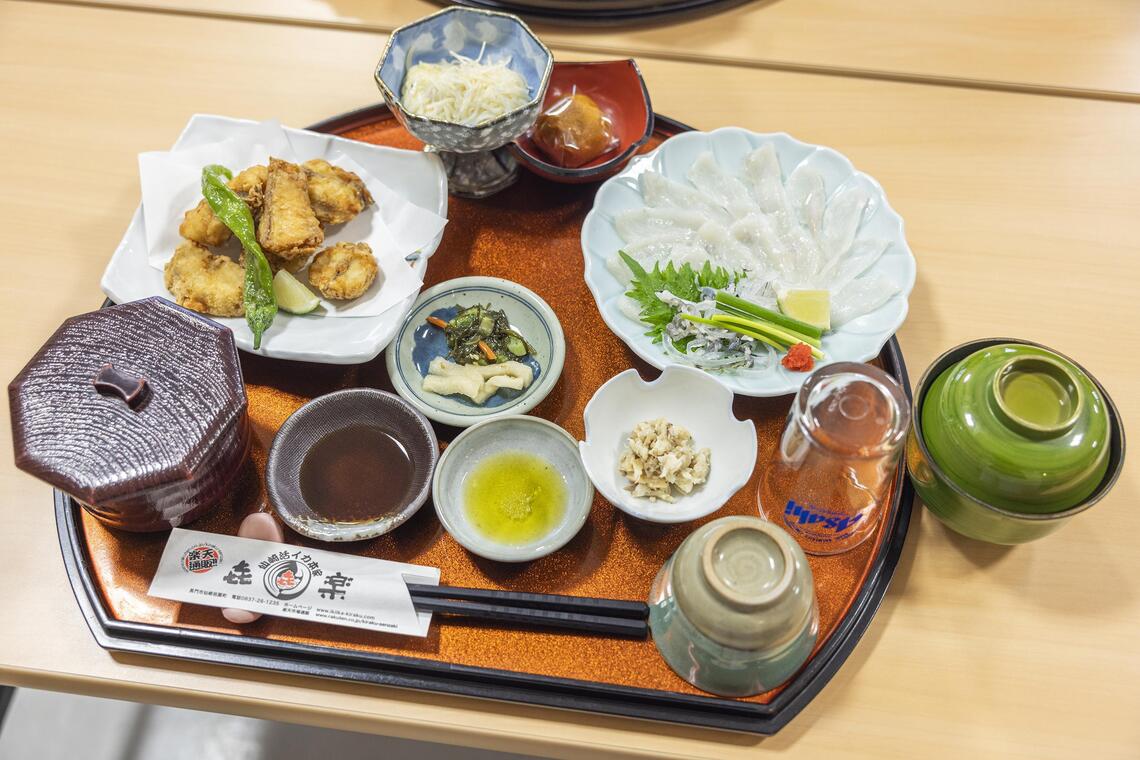
Kiraku’s fugu meal showcases the pufferfish’s textures through different preparation methods.
PHOTO: BOOKING.COM
I love that you get a mix of textures of the fish and a taste of its original sweetness with the sashimi, fresh from the pufferfish farm run by Kiraku’s executive chef and managing director Jin Shiraishi.
Mr Shiraishi, formerly a chef at The Ritz-Carlton Hotel in Tokyo, returned to work with his father at the farm seven years ago.
The farm produces about 50,000 fugu a year, mainly to supply to restaurants and sell online.
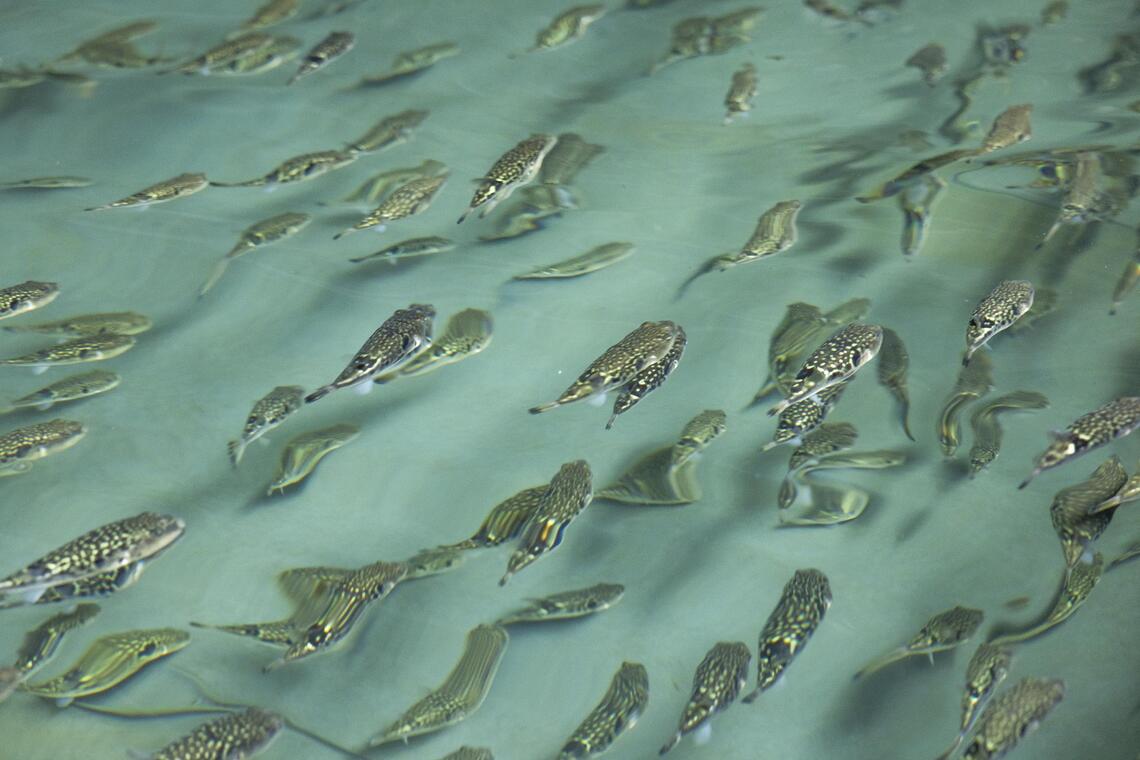
Mr Jin Shiraishi’s fugu farm, which he runs with his father, produces about 60,000 fugu a year.
PHOTO: BOOKING.COM
The restaurant is accessible via Senzaki Station, which is also conveniently surrounded by a Senzakitchen supermarket (4297-1 Senzaki, Nagato 759-4106) and Omijima Sightseeing Boat Terminal.
Info:
hyakusho-an.com
Do not worry, there is no need to travel to Hyakusho-an’s far-flung salt farm for its products.
The salt is stocked in several locations across Nagato, including Senzakitchen supermarket and at the gift shop of Yuyawan Onsen Hotel Yokikan, where we stay at.
But after seeing how it is made, it is now the most precious ingredient in my pantry.
The salt – “made by nature” is the tagline on the door – is said to have a mineral balance close to that of the ocean, due to a traditional and laborious method called tenchi gaeshi.
It is like entering a salt sauna, where Hyakusho-an’s president Yuzen Inoue gently stirs and mixes the water drawn from the Sea of Japan into tanks that are heated up via woodfire.
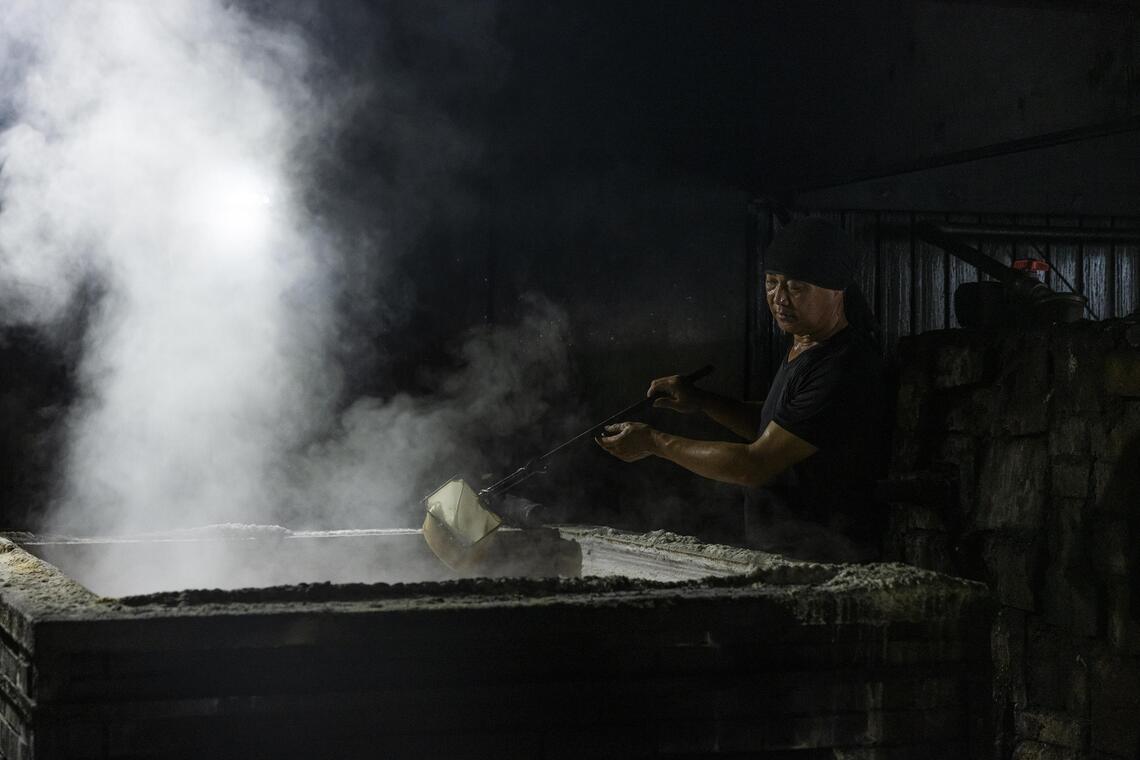
Hyakusho-an’s president Yuzen Inoue gently stirs and mixes the water drawn from the Sea of Japan into tanks that are heated up to 80 deg C.
PHOTO: BOOKING.COM
After one week in these tanks, condensation starts and the salt begins to crystallise.
The wet salt is shovelled into pots and left to dry, then transferred to what looks like salt cabinets to complete the drying process.
He and his staff produce about 300kg of salt a week in winter, and about 200kg in summer.

Hyakusho-an’s seasonal salt.
PHOTO: BOOKING.COM
The salt is labelled according to the four seasons (1,580 yen for a 140g packet), and there is a range specifically for fish, meat and salad (540 yen for a 50g packet).
He deems the summer and autumn salt to be of better quality due to the higher mineral content from the warmer waters.
Where: 911 Higashifukawa Ekimae, Nagato 759-4101
Info:
@koumori.nagato
on Instagram
It is not every day you go to a yakitori joint – the oldest one in Nagato – fronted by a female chef and her charismatic husband.
They give our group the warmest welcome and introduce themselves simply as Mr and Mrs Ofuka.
Started in 1978, Koumori is Nagato’s oldest yakitori restaurant and Mrs Ofuka is the third generation from her family running it.
The menu is straightforward and we savour an array of skewers – priced at about 150 yen a stick. They include chicken breast, chicken meatball, pork and juicy shiitake mushrooms – all masterfully grilled over charcoal.
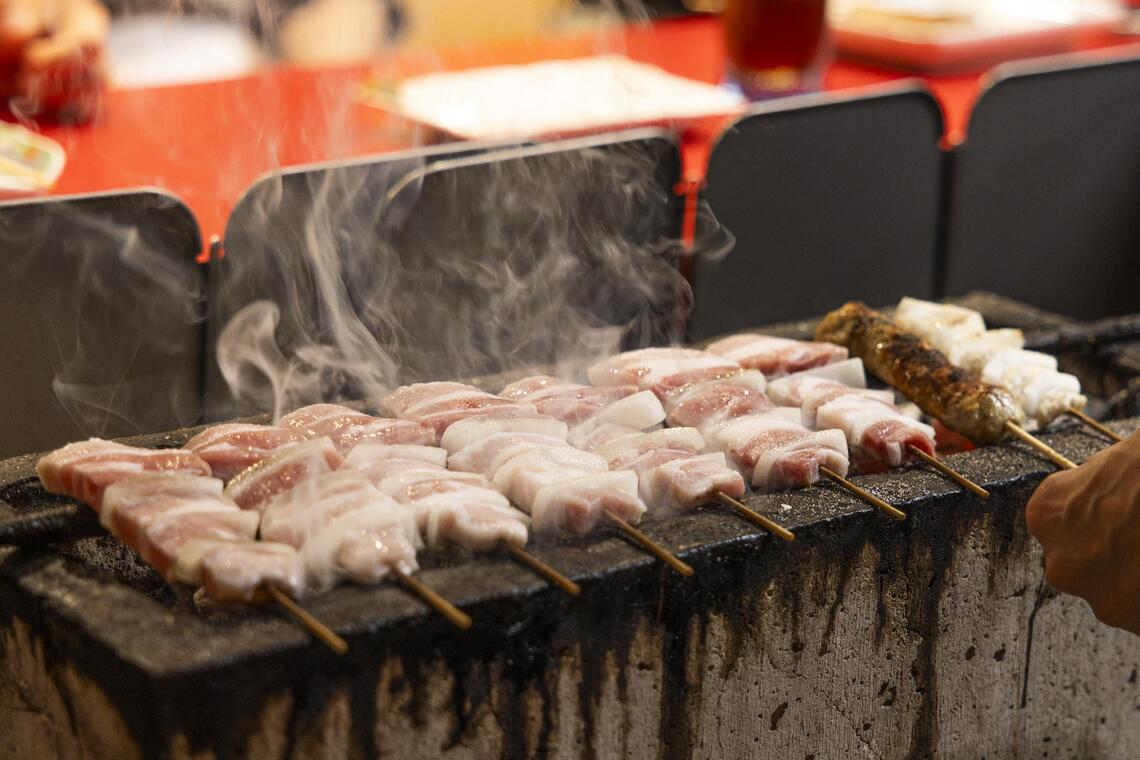
Nagato is known as yakitori town.
PHOTO: BOOKING.COM
We are also encouraged to try the various meats with garlic powder, which is said to be “Nagato-style”.
And while the food is delicious, it is the couple’s infectious energy that is truly the memorable part of the meal.
When we point out Mrs Ofuka’s use of a very worn-out fan that looks like it has been through a shredder, the couple have a good laugh and Mr Ofuka whips out what the original red fan looked like for comparison.
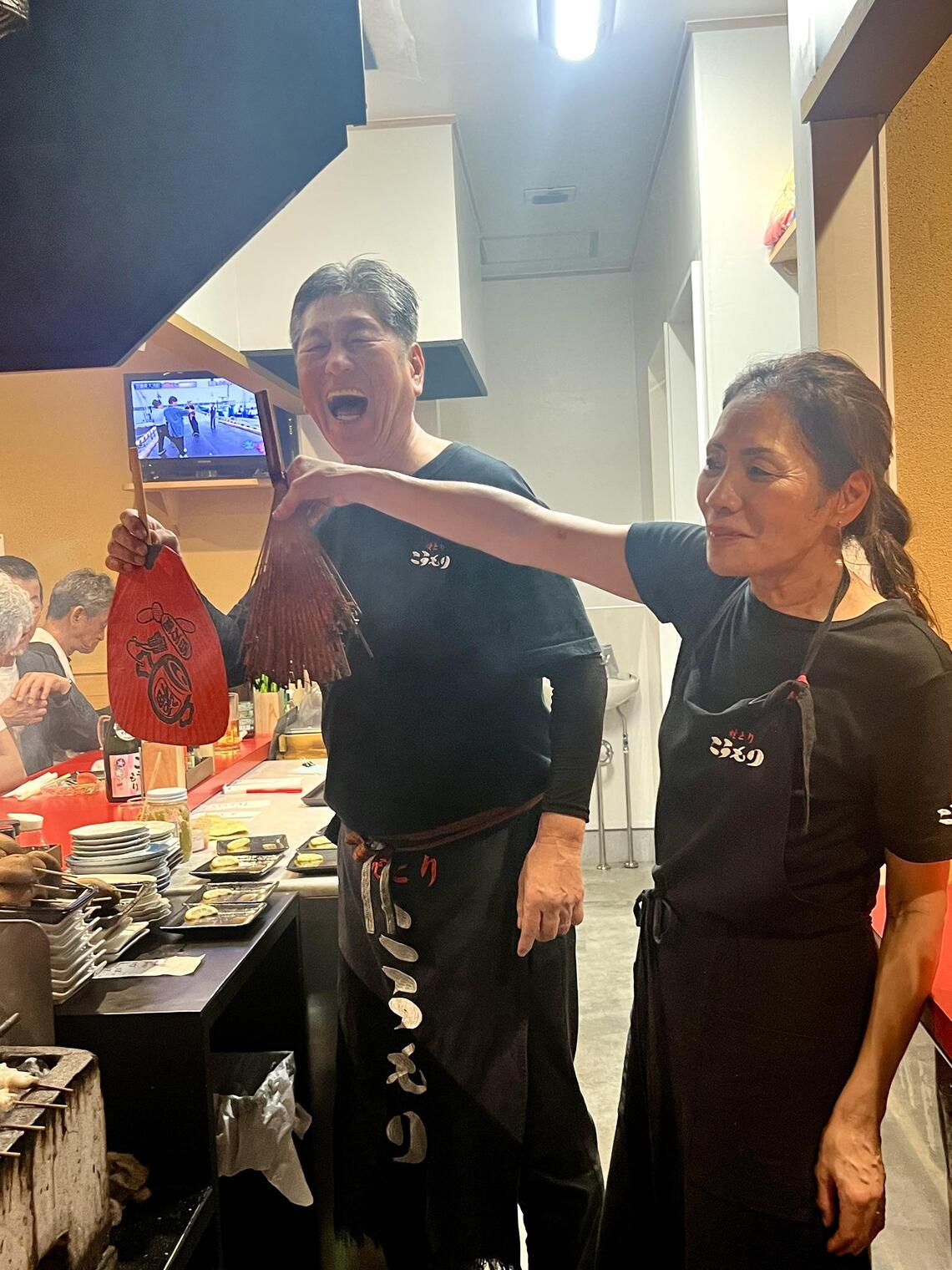
The energetic Mr and Mrs Ofuka of yakitori joint Koumori.
ST PHOTO: EUNICE QUEK
There are enthusiastic shouts of kanpai all around and although we are there for just an hour, it is the happiest meal of the trip.
Where: 138 Kurumaji, Ube city
Info:
domainetaka.com/en/company
Sake breweries are aplenty throughout Japan, but not all can proudly proclaim that they own their rice field.
Well, Nagayama Honke, established in 1888, can.
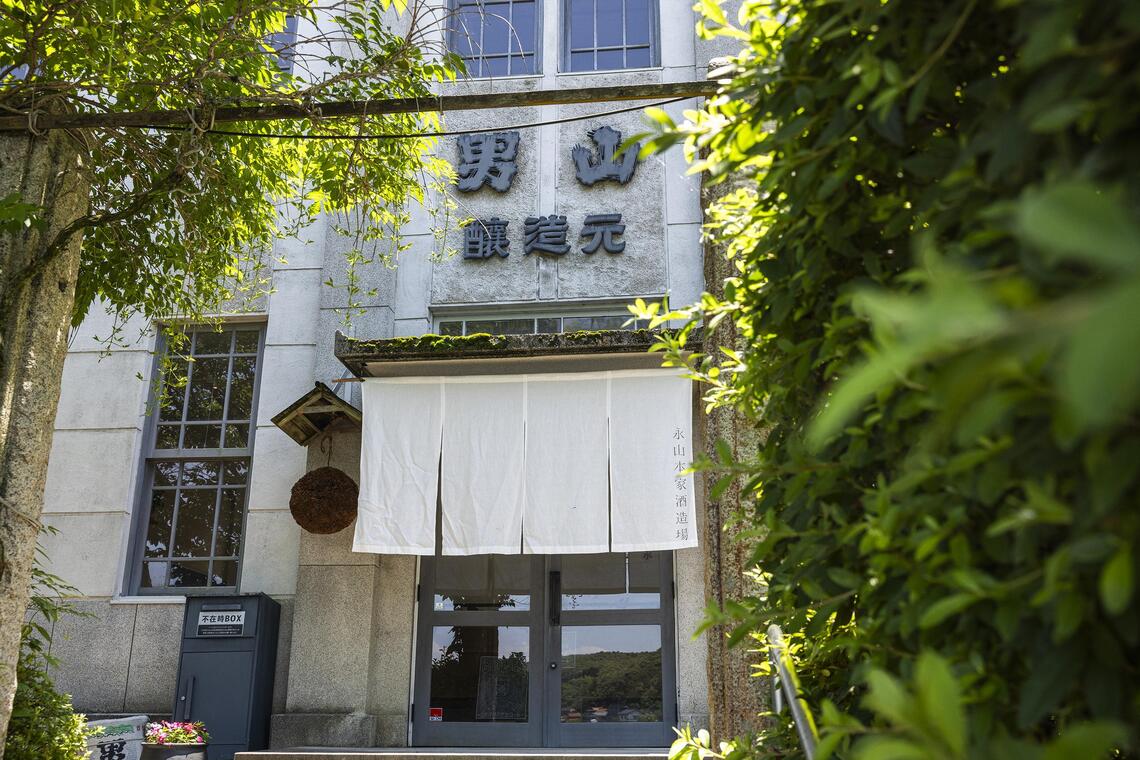
Nagayama Honke sake brewery was established in 1888.
PHOTO: BOOKING.COM
Its fifth-generation owner Takahiro Nagayama points out the Yamada Nishiki rice fields – used for his Domaine Taka sake – just across from the brewery where Koto River passes through.

Nagayama Honke’s fifth-generation owner Takahiro Nagayama.
PHOTO: BOOKING.COM
The water it carries comes from Chugoku Mountains and runs through the limestone karst plateau of Akiyoshidai. This results in a “moderately hard” mineral-rich water, which speeds up fermentation and adds to the flavour profile of the sake.
We do not get to see any sake-making in action as the season is usually from October to May and the hotter months from June to August are for maintenance of the rice fields, he explains.
But we still get to taste his junmai daiginjo and junmai ginjo sake.

Nagayama Honke’s Domaine Taka junmai daiginjo (left) and junmai ginjo sake.
PHOTO: BOOKING.COM
It is cheaper to buy the sake at the brewery’s store, which carries the full range and merchandise. Prices start at 1,760 yen for a 720ml bottle of Taka Junmai.
In Singapore, the sake is sold online at Sake Mama (
sakemama.com.sg
), priced from $64 for a Taka Tokubetsu Junmai (720ml). The sake is also sold overseas in various destinations including the United States, Taiwan, South Korea and Hong Kong.
Where: 498 Yuyatsuo, Nagato, Yamaguchi 759-4712 (Motonosumi Shrine); Hohokucho Oaza Kanda, Shimonoseki, Yamaguchi 759-5331(Tsunoshima Bridge)
These two postcard-worthy coastal locations are must-visits when on a road trip through Nagato.
First, the striking Motonosumi Shrine features 123 red torii gates going uphill.

The Motonosumi Shrine was built over 10 years.
PHOTO: BOOKING.COM
Built over 10 years from 1987, it honours a white fox spirit to whom visitors pray for financial success, fishing success and safety on the seas.
It is not a strenuous hike up and, at the top, there is a box on the tallest torii gate for one to toss a coin in to make a wish.
About a 40-minute drive away is the 1,780m-long Tsunoshima Bridge, which stretches across the shimmering cobalt blue sea. Best viewed from its observatory area and Amagase Park, it is a sight to behold.
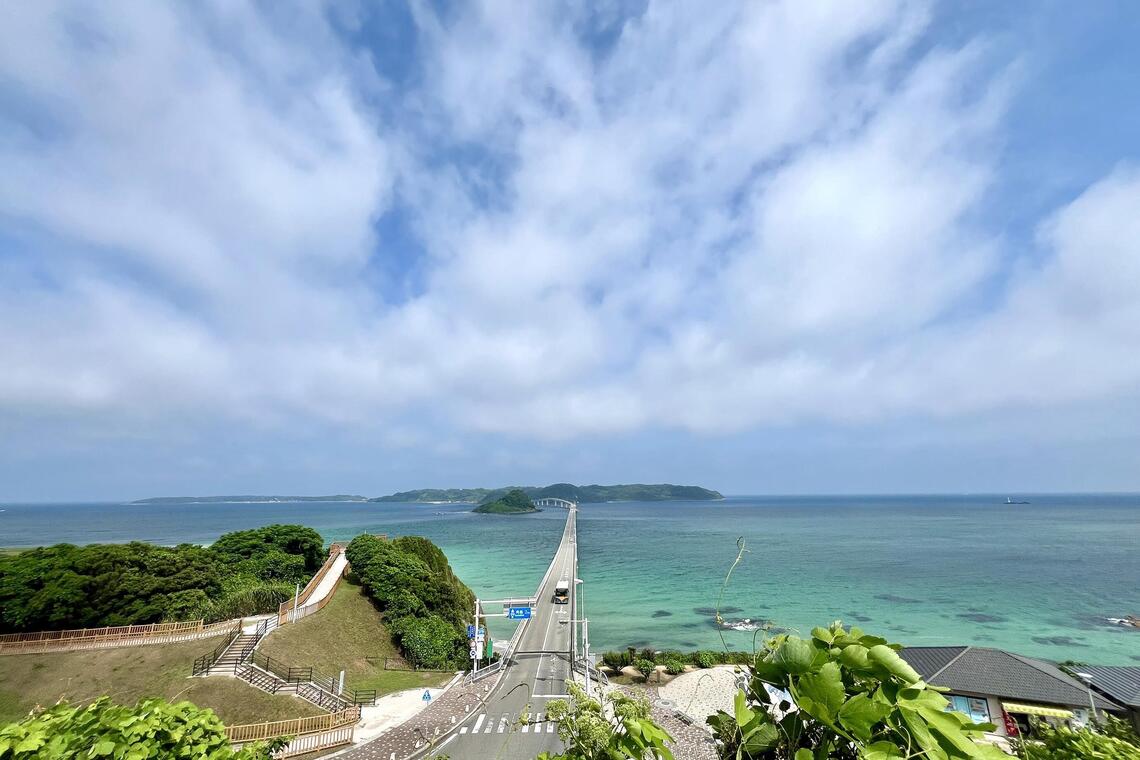
The 1,780m-long Tsunoshima Bridge stretches across the shimmering cobalt blue sea.
ST PHOTO: EUNICE QUEK
There are small cafes in the area, or drive across to Tsunoshima Island, for its Cobalt Blue Beach and more eateries.
Where: 4297-2 Senzaki, Nagato city
Info:
str.sg/Muk3
After having a fugu lunch at Kiraku and before shopping at Senzaikitchen, go for the Omijima sightseeing cruise.
Omijima Island, in the Sea of Japan, is located in the Kita-Nagato Kaigan Quasi-National Park.
A section of the dramatic rock formations is known as the “Alps of the Sea”, and the best way to view its natural beauty is via a relaxing and breezy boat ride.
Colourful whale-style cruise ships take you around in various courses – from 50 to 80 minutes – priced from 2,000 yen for an adult. At the end, the ship even has a “blowhole” to spray water as it bids farewell.
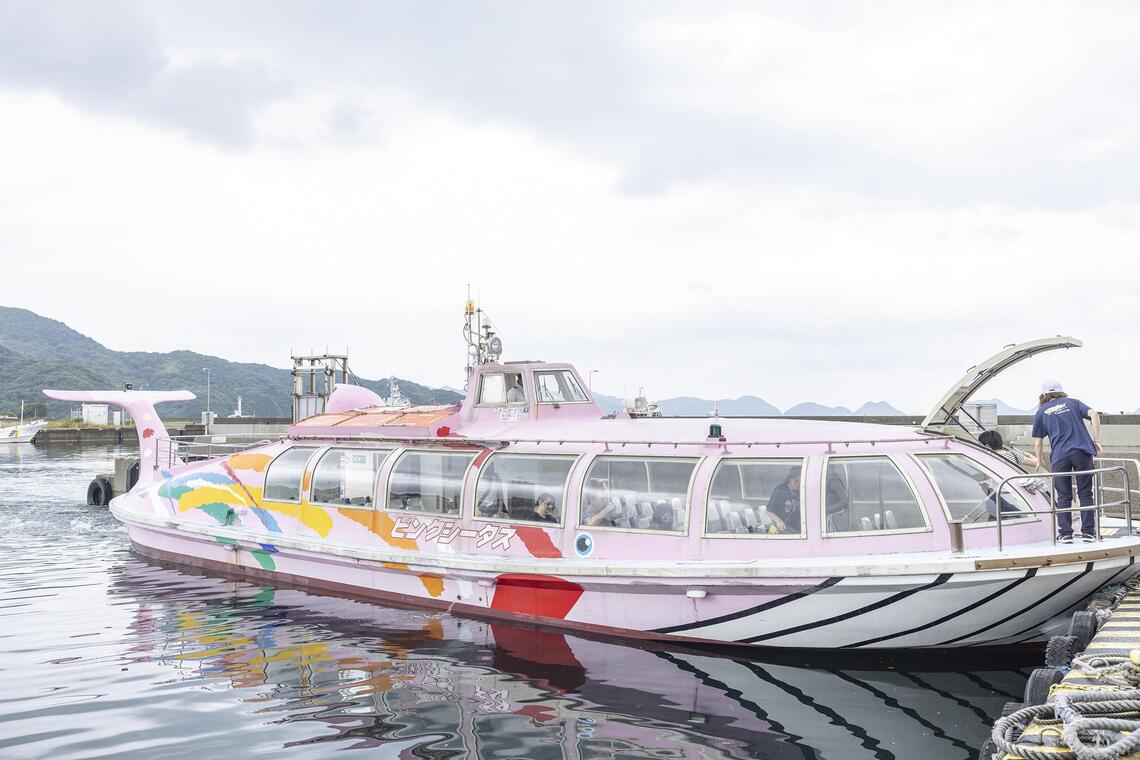
The Omijima cruise ships are styled like whales.
PHOTO: BOOKING.COM
After each long day out, a hot soak in the onsen is highly welcome.
If you like to onsen hop, the historical onsen town of Nagato Yumoto Onsen has a variety of large and small hotels that flank the picturesque Otozure River.
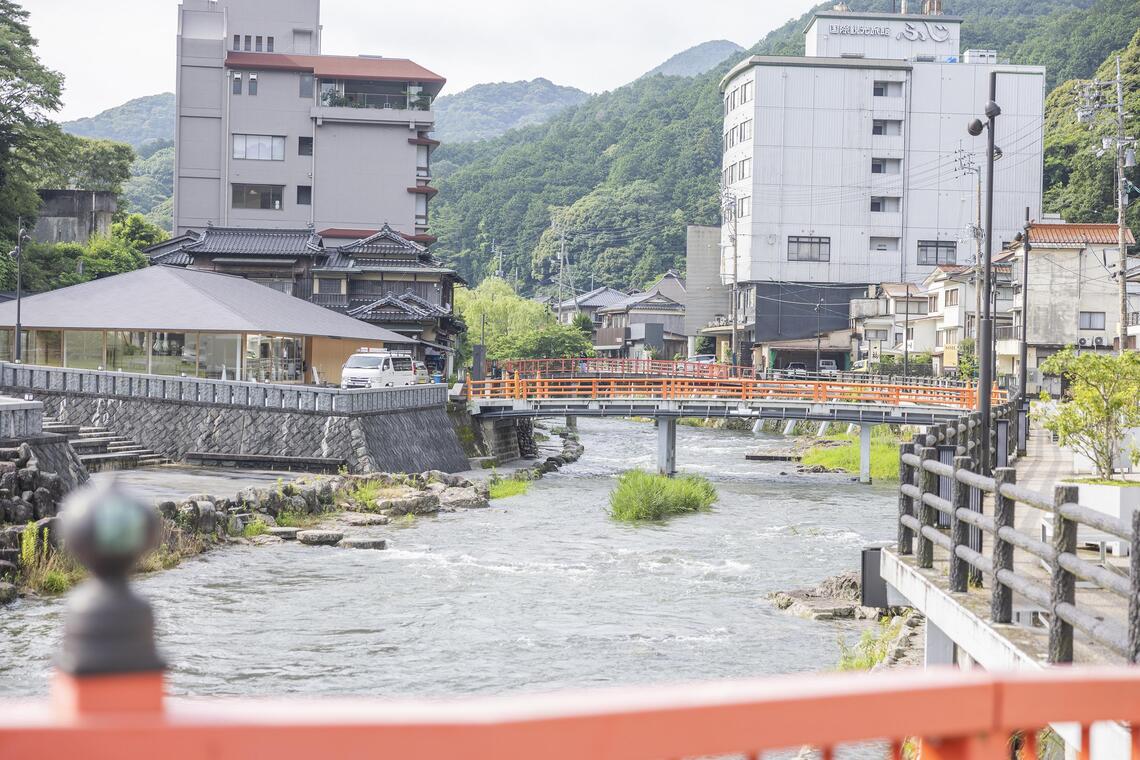
The historical onsen town of Nagato Yumoto Onsen.
PHOTO: BOOKING.COM
I stay at the chic and modern Ryokan Gyokusenkaku (
bit.ly/46NTAM0
), where I get one of its newer rooms that look straight out of a Muji showcase. Prices start at 16,500 yen a night for a double room on Booking.com.
Although we did not manage to see much of the town – it had shut by the time we arrived on a rainy late afternoon – I can imagine how beautiful it would be to stroll through the park and drop by the cafes and bars.
The other ryokan I stay at is a more traditional home-style one – Yuyawan Onsen Hotel Yokikan (
bit.ly/4mM5XOx
). Prices start at 22,000 yen a night for a double room on Booking.com.
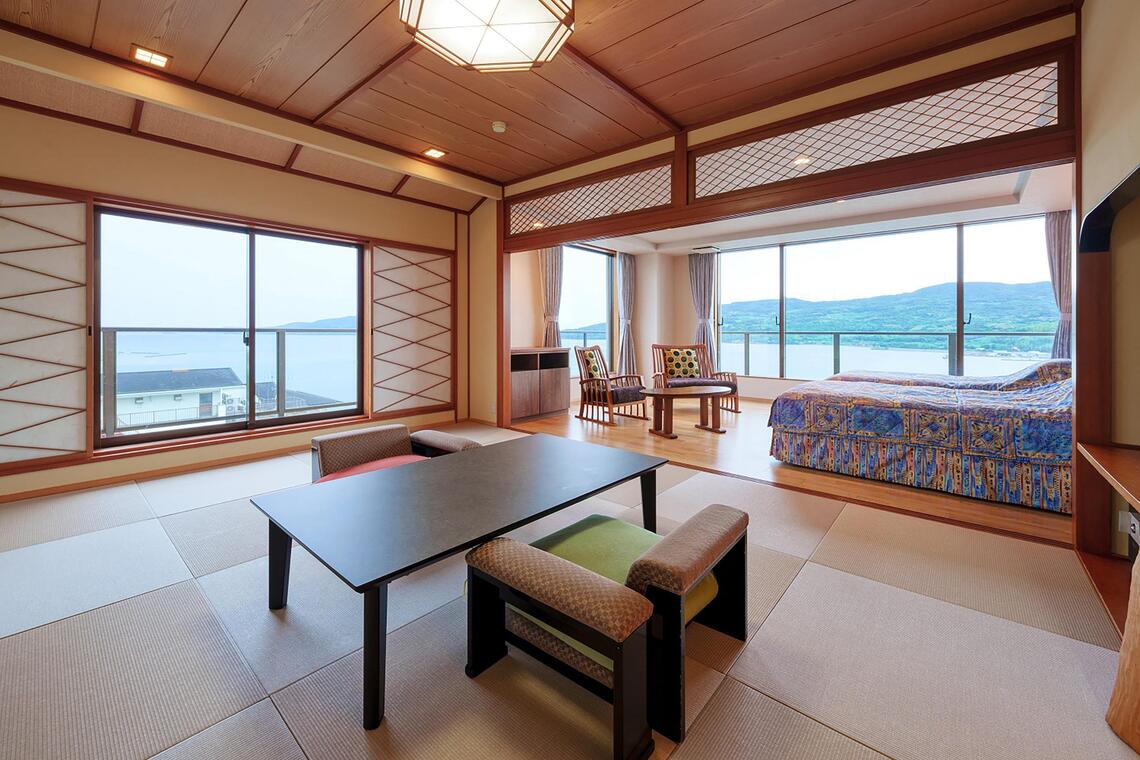
Yuyawan Onsen Hotel Yokikan’s home-style rooms.
PHOTO: BOOKING.COM
The spacious rooms, complete with tatami flooring, face the Yuyawan Bay and some rooms have their own onsen, or open-air bath.
Between the two hotels, I prefer the onsen at Yuyawan Onsen Hotel Yokikan, where its silky alkaline waters leave my skin feeling extra soft and supple.
When I mention this to the hotel’s director Akifumi Okafuji, he beams with pride, pleased that I have felt the difference in the water.
After all, he is also an executive member of the All Japan Ryokan Hotel Association Junior (Youth Wing) and an Onsen Culture Ambassador. He is on a mission to enlist onsen culture on the Unesco Intangible Cultural Heritage list, joining sake and washoku (traditional Japanese cuisine).
His hotel is certainly the full package – from a sumptuous dinner prepared for us on the night we arrive to a gift shop stocked with plenty of souvenirs.
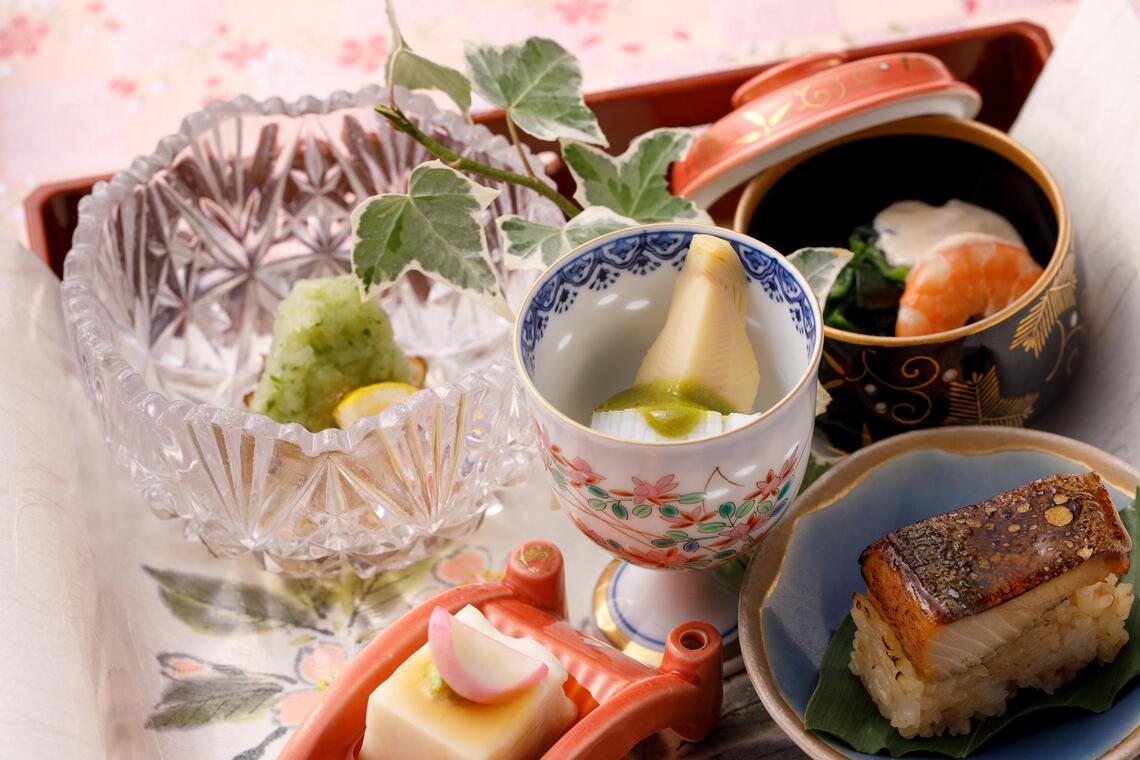
Yuyawan Onsen Hotel Yokikan’s sumptuous multi-course dinner features seasonal produce.
PHOTO: BOOKING.COM
By the end of the three-day trip, I realise that Mr Okafuji is more than the many hats he wears. He – and all the artisans we have met – are the region’s best showcase of hospitality and dedication to craft.
The writer was hosted by
Booking.com
.


AloJapan.com